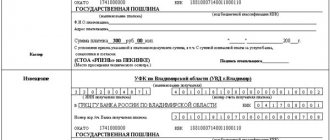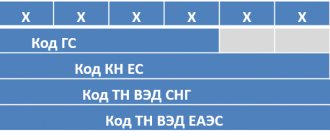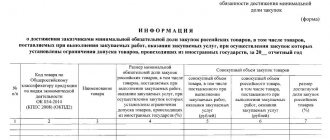The product range includes various products that are provided to the market. The main goal is to sell to the end consumer. In accordance with another definition, a product range is a group interconnected by common criteria, functions performed, price range, etc.
Product nomenclature
This is a certain set of assortment groups of goods, as well as product units that are offered to customers by the seller. This may include one or more product ranges.
Concept and features of the product range
The product, its production, pricing, promotion and sales are the main components of the marketing system. In this regard, they are reflected in the product range, as well as in the product range. At the same time, the product range is a group of goods that, due to the similarity of existing characteristics, interact with each other.
The most significant characteristic is the same target audience, the similarity of their functioning, as well as other criteria.
Simply put, an assortment of goods is traditionally understood as a set that was formed on the basis of characteristics and satisfies various needs.
The assortment in this case is a set of commercial products, which includes product lines and brands.
The assortment of goods has its own characteristics, such as depth and width. The depth of the product assortment is determined in accordance with the single number of product items available within each product category and included in the assortment. The width of the product assortment is the single number of product categories that make up the assortment. Other characteristics of the product range include its completeness, harmony, structure and level of renewal.
Commodity nomenclature of foreign economic activity.
History of the development of product nomenclatures in world trade:
} In the middle of the 19th century, during the industrial revolution, foreign trade began to develop rapidly in Europe. This has confronted trading countries with the need to develop comparable definitions and unify product nomenclatures for customs purposes.
} Until 1900, almost all reference books on the results of foreign trade published by various countries listed only those goods that were of greatest importance for the foreign trade of a particular country. Some used alphabetical characteristics for classification, others - the origin of goods (agricultural and industrial-craft).
} In 1913, in Brussels, 29 countries signed a convention, the main provisions of which were that, while maintaining national classifications and product nomenclatures for their publications, they would compile and report data on a unified classification and product nomenclature to the specially created International Bureau of Foreign Trade Statistics
} The main classification feature
, on the basis of which goods were distributed in the Brussels nomenclature of goods, was the type of material from which they were made.
Classification characteristics of goods:
To important classification features
industrial and food products include:
• purpose;
• raw materials;
• the nutritional value;
• chemical composition;
• type of product, features of its design (model, style);
• production method;
• character of finishing;
• dimensional characteristics and more.
Why do we need a unified international system of classification of goods:
} in international trade, the same product has to be described several times when moving it from country to country;
} various systems for describing and, accordingly, coding goods at a lower level of detail are used. This is the main source of errors that complicate the application of customs and freight tariffs;
} participants in international trade are forced to spend a lot of time, money and effort on checking and correcting data on goods;
} the difference in the description and coding systems of goods of different countries makes it difficult to collect and compare foreign trade statistics at the international level, this in turn complicates the process of international trade negotiations;
} the lack of intercomparable and standard generally accepted codes prevents the transfer of foreign trade data from country to country via telecommunications channels, which leads to a significant slowdown in the transportation of goods, increasing the costs associated with imports and exports;
} different descriptions and coding of goods prevent the use of uniform forms of documents and systems for processing them using the write-once method.
On the creation of a unified international commodity classification system:
} Due to the fact that international product nomenclatures were based on the use of various classification principles, the question arose of developing a single international classifier that could be used in all countries when participants in foreign economic activity formalize foreign trade transactions at customs, as well as conduct analysis of foreign trade for individual products, product groups and positions.
} Since none of the previously developed international nomenclatures fully met the requirements that individual countries and international organizations placed on it, the UN Customs Cooperation Council was instructed to study the possibilities of creating a unified international commodity classification system, which was later called the Harmonized Description System and coding*
goods.
*Coding (classification)
classification of goods is carried out in accordance with the requirements of the Commodity Nomenclature and is a technical technique that allows you to present the classified product in the form of a group of signs (product code) established by this classifier.
Creation of a Harmonized System for Description and Coding of Goods:
Work on the creation of the Harmonized System for Description and Coding of Goods began in 1973 and lasted about 10 years, until 1985.
In Russia it came into force on January 1, 1988.
As a basis for the Harmonized System, 13 different nomenclatures were used, international, regional and national classification systems, nomenclatures and tariffs operating in trade, the main ones among which were:
· Commodity nomenclature of foreign trade of the EEC countries,
· Nomenclature of the Customs Cooperation Council;
· United Nations Standard International Trade Classification;
· Customs tariffs of a number of countries (USA, Japan, Canada, etc.);
· Standardized product nomenclature of the International Union of Railways and a number of others.
International Convention on the Harmonized System of Description and Coding of Goods:
} A harmonized system for describing and coding goods can be defined as a multi-purpose product nomenclature that simultaneously meets the needs of customs and statistical authorities and takes into account as much as possible the foreign trade and production statistics of various countries.
, the International Convention on the Harmonized Goods Description and Coding System was signed on June 14, 1983 in Brussels
.
Harmonized system of description and coding of goods:
Harmonized system of description and coding of goods
(HS) is a nomenclature that includes product items and subitems, digital codes related to them, grouped according to certain characteristics into groups and sections, as well as the basic rules for interpreting the Harmonized System.
The HS consists of 21 sections, 7 levels of classification, of which the highest is section.
In addition to the HS nomenclature, there are supporting publications
, which contribute to the correct search for a product’s place in the Civil Code and assigning it the correct code:
• explanations to the HS (contain a commentary on each product item indicating the list of included and excluded goods, their technical description);
• alphabetical index to the HS and explanations (represents a list of goods included in this system, arranged alphabetically);
• collection of classification decisions on the HS (list of decisions affecting coding issues in the event of disputes or non-standard situations);
• transition keys between the HS and the nomenclature of the Customs Cooperation Council.
Nomenclature of the harmonized system of description and coding of goods. Code structure:
} The Harmonized System for Description and Coding of Goods is a nomenclature that includes commodity items and subitems, digital codes related to them, grouped according to certain characteristics into groups and sections, as well as the basic rules for interpreting the Harmonized System.
} Code structure
in accordance with the nomenclature of the Harmonized System for Description and Coding of Goods has the following form:
} So, the length of the digital code
goods in accordance with the structure of the nomenclature of the Harmonized System of Description and Coding of goods is
6 characters
: the first two are a group, the first four are a position, six characters are a subposition.
Commodity nomenclature of foreign trade activities of the Russian Federation:
Until January 1, 2010 In the Russian Federation, the Commodity Nomenclature of Foreign Economic Activity of the Russian Federation was used.
The Commodity Nomenclature of Foreign Economic Activity was determined and approved by the Government of the Russian Federation based on the goods classification systems accepted in international practice
Federal Law No. 5003-1 of May 21, 1993 “On the Customs Tariff”
Commodity Nomenclature of Foreign Economic Activity of the Customs Union:
From January 1, 2010 In the Russian Federation, the Commodity Nomenclature of Foreign Economic Activity of the Customs Union is applied.
The Commodity Nomenclature of Foreign Economic Activity of the Customs Union was put into effect by the Decision of the Interstate Council of the EurAsEC (supreme body) No. 18 dated November 27, 2009 No. 18 “On the unified customs and tariff regulation of the customs union of the Republic of Belarus, the Republic of Kazakhstan and the Russian Federation”
The commodity nomenclature of foreign economic activity is based on the Harmonized System of Description and Coding of Goods of the World Customs Organization and the unified Commodity Nomenclature of Foreign Economic Activity of the Commonwealth of Independent States.
The commodity nomenclature of foreign economic activity is approved by the Commission of the Customs Union.
Customs Code of the Customs Union, Article 51
In order to ensure uniformity of interpretation of the unified Commodity Nomenclature of Foreign Economic Activity of the Customs Union when classifying goods, the decision of the Customs Union Commission of January 28, 2011 No. 522 was adopted
Terms and definitions introduced by CCC Decision No. 522:
Classification grouping
— a set of goods named in the CU FEACN that have common characteristics.
Higher classification groupings are divided hierarchically into subordinate classification groupings.
The general characteristics of goods included in classification groups are determined on the basis of the characteristics specified in their names, taking into account the characteristics specified in immediately higher classification groups and notes contained in the Commodity Nomenclature of Foreign Economic Activity of the Customs Union.
Types of classification groups:
• product item
• subitem
• subheading
Terms and definitions of the Commodity Nomenclature of Foreign Economic Activity of the Customs Union:
Code
- an ordered set of Arabic numerals used to indicate the classification grouping of goods.
Product item
- a classification grouping of goods that has
an unhyphenated name
and a code
consisting of four digits or more,
provided that
all digits starting from the fifth are zeros.
Examples of product item codes
Subheading
- a classification grouping of goods included in a product item, having a one-hyphen or two-hyphen name, and either having
a code consisting of six digits or more,
provided that the fifth digit of the code is non-zero and all digits of the code, starting from the seventh, are zeros,
or without a code
, provided that the fifth digit of the codes of subordinate classification groups is different from zero.
Subheading
- classification grouping of goods included in the subposition, and in its absence, included in the product heading, and
or having a code consisting of more than six digits
,
or without a code
, but having a single-hyphen or multi-hyphen name, provided that the codes of the subordinate classification groups have a fifth digit “zero” and/or consist of more than six digits.
Subheadings may be included in higher subheadings.
Concept and features of product nomenclature
A product nomenclature is a list of heterogeneous and homogeneous goods of a single or similar purpose.
In other words, this is a systematic list of goods that are divided into groups and subgroups. It reflects the variety of goods and services produced and sold by the enterprise.
The main characteristics of the product range are as follows:
- Breadth of product range. This is a single number of assortment groups of goods that are offered by the organization.
- Saturation. This is the total number of product units in all product groups that are produced.
- Harmony. This is the level of proximity that exists between goods of a wide variety of product groups in terms of their purpose, requirements for the organization of production, as well as distribution and promotion channels.
The main stages of formation of the product range are the following:
- consideration of future markets, as well as their segments;
- selection of the most preferred markets;
- establishment of a basic product range;
- assessment of the economic criteria of the company’s activities based on the basic product range (profitability, costs, capital investments for the selected basic product range);
- formation of a rating of goods that are included in the basic product range;
- creation of a marketing strategy, as well as a program for each product of the basic product range.
Classification of product range
Finished works on a similar topic
Course work Product nomenclature and product range 470 ₽ Abstract Product nomenclature and product range 250 ₽ Test work Product nomenclature and product range 250 ₽
Receive completed work or specialist advice on your educational project Find out the cost
The range of consumer goods is subject to multiple classifications on various grounds (Figure 1).
Figure 1. General classification of product range. Author24 - online exchange of student work
The product range should be divided into groups based on location, into subgroups based on depth and breadth of coverage, into types depending on the degree of satisfaction of needs, into varieties depending on the nature of the needs.
Based on the criterion of location of goods, the range of goods is divided into commercial and industrial. The trade assortment is represented by a set of goods grouped by a trade organization on the basis of consumer demand, its specialization and material and technical base. The industrial assortment is understood as a set of goods that are produced by a commodity producer based on the production capabilities that it possesses.
In terms of breadth of coverage, the product range can be simple, complex, group, expanded, related or mixed. A simple product range is represented by a set of goods consisting of a small number of groups, names and types, aimed at satisfying a limited number of consumers. A complex assortment is represented by a significant number of types, groups, varieties and names of goods that satisfy various needs. A group assortment is understood as a set of goods of a homogeneous type, which are united by a certain commonality of characteristics and satisfy similar needs. An expanded type assortment is represented by a set of goods consisting of a large number of varieties, types, subgroups and names, which, although they belong to a group of homogeneous ones, still do not differ in the presence of individual characteristics. The accompanying product range consists of goods that perform auxiliary functions and are not classified as core for a given enterprise. A mixed product range is formed by products of various types, groups and names that differ in their functional purpose.
Depending on the depth of product coverage, an enlarged product range is distinguished, divided into two types:
- product range (products of various types and names that satisfy similar needs);
- branded assortment (products of one type or one brand).
Depending on the degree of satisfaction of needs, the product range is divided into optimal and rational. The first is designed to satisfy real needs with maximum effect for consumers at minimal cost, and the second most fully satisfies needs that are actually justified, that is, through the satisfaction of which the highest possible quality of life is ensured in the conditions of a certain technological development.
Finally, according to the nature of the needs, a distinction is made between the actual and predicted product range.
Issues for discussion
1. Which classification group of consumer goods should the Sony color TV be included in (daily demand goods, pre-selection goods, special demand goods or passive goods)?
2. Lately, the expression “brand image” has become very fashionable on Madison Avenue, describing not the inherent qualities of a branded product, but the feelings of people about that product. The company that produces Timex watches wants to change the image of the brand from the idea of its product as something simply useful to some other idea. What new image could you propose and what do you think the firm should do to change the existing image?
3. Relate the concepts of product nomenclature, product assortment and product unit with the products of the General Motors Corporation.
4. Explain the concepts of product by design, product by execution, and product by reinforcement using your favorite brand of perfume, cologne, or shaving lotion as an example.
5. How many different outlets should carry consumer goods in each of the four classification groups: convenience goods, pre-selection goods, specialty goods and passive goods? Explain why?
6. Industrial products always become part of the finished product. Please comment on this statement.
7. Briefly explain who benefits from the use of brand names.
8. Describe some of the service management decisions that must be made by the owner of a women's clothing store, the manager of a savings and loan association, or the owner of a sporting goods store.








